Job Offer Letter Template for a Professional Hiring Process
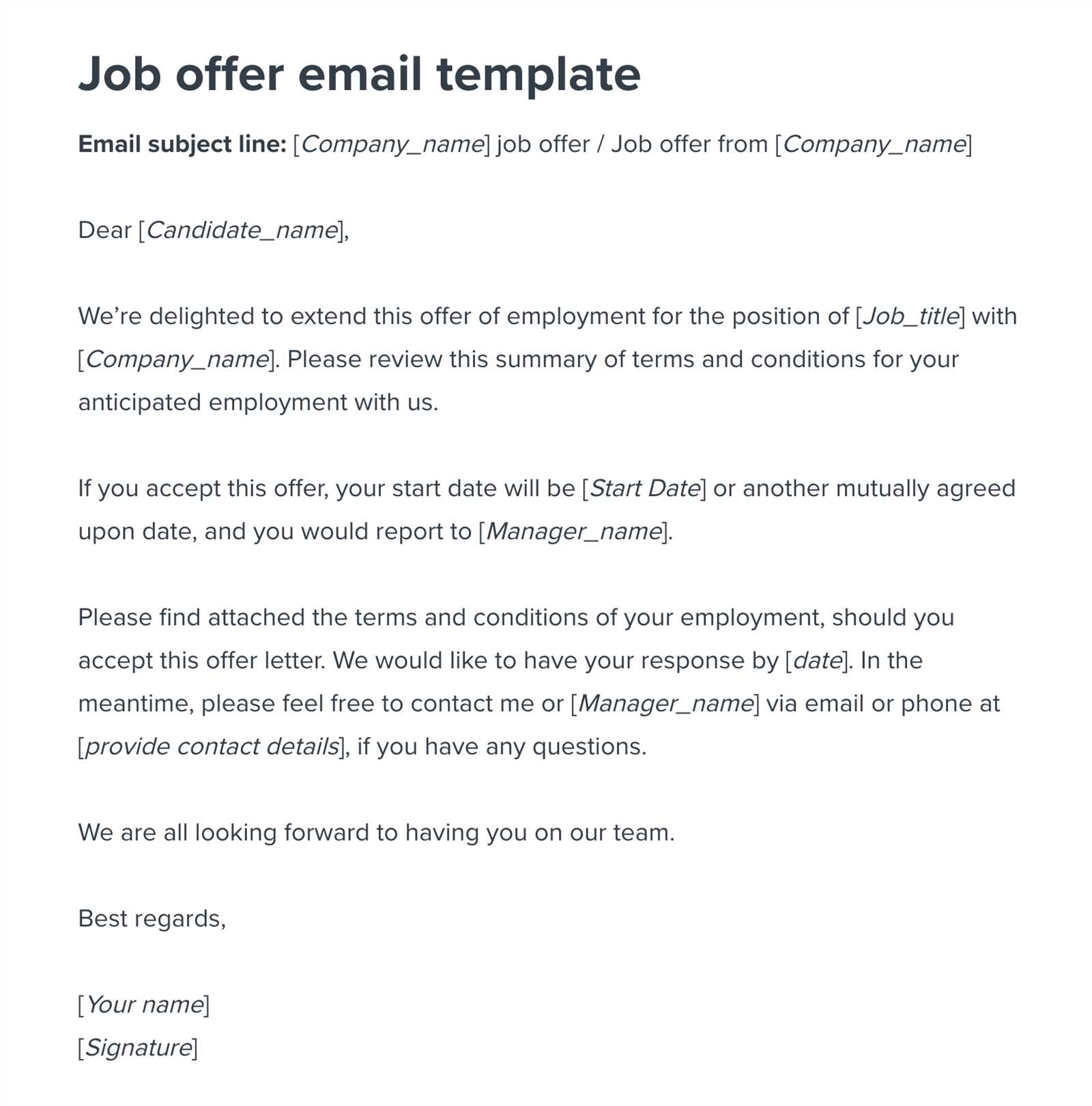
When you decide to bring someone onto your team, presenting the right terms in writing is crucial. A well-crafted document can set clear expectations and foster trust between both parties. It serves not only as a formal agreement but also as an essential part of the hiring process, ensuring that every detail is understood and agreed upon.
In this section, we explore the key aspects of constructing a formal communication to extend employment terms to a new hire. By following a structured approach, you can avoid confusion and miscommunication, providing a solid foundation for a successful working relationship. The right document can highlight the role, responsibilities, and benefits that come with the position.
Customization plays a significant role in making this communication relevant and specific to the role being offered. It’s important to align it with your company’s standards and the expectations of the individual joining your team. Using a well-defined structure can ensure clarity while maintaining professionalism.
Key Elements to Include in a Formal Proposal
When drafting a formal communication to extend a position to a candidate, it is important to include certain crucial details that will clarify the terms of employment. These components help outline the expectations of both the employer and the individual joining the team. By ensuring that all key points are covered, the document acts as a clear guide throughout the onboarding process.
Among the essential components is the role description, which outlines the responsibilities and expectations associated with the position. This helps set the stage for the new hire, ensuring that both parties are aligned on what is required. Additionally, compensation details, including salary or hourly rate, along with any bonuses or benefits, must be clearly stated to avoid misunderstandings.
Another critical aspect is the start date, which establishes when the individual will begin their work. It’s also beneficial to include information regarding work schedule, office location, and any specific job-related requirements. Finally, the document should mention any contingencies or conditions, such as background checks or drug screenings, which may be necessary before finalizing the employment.
How to Personalize Your Employment Proposal
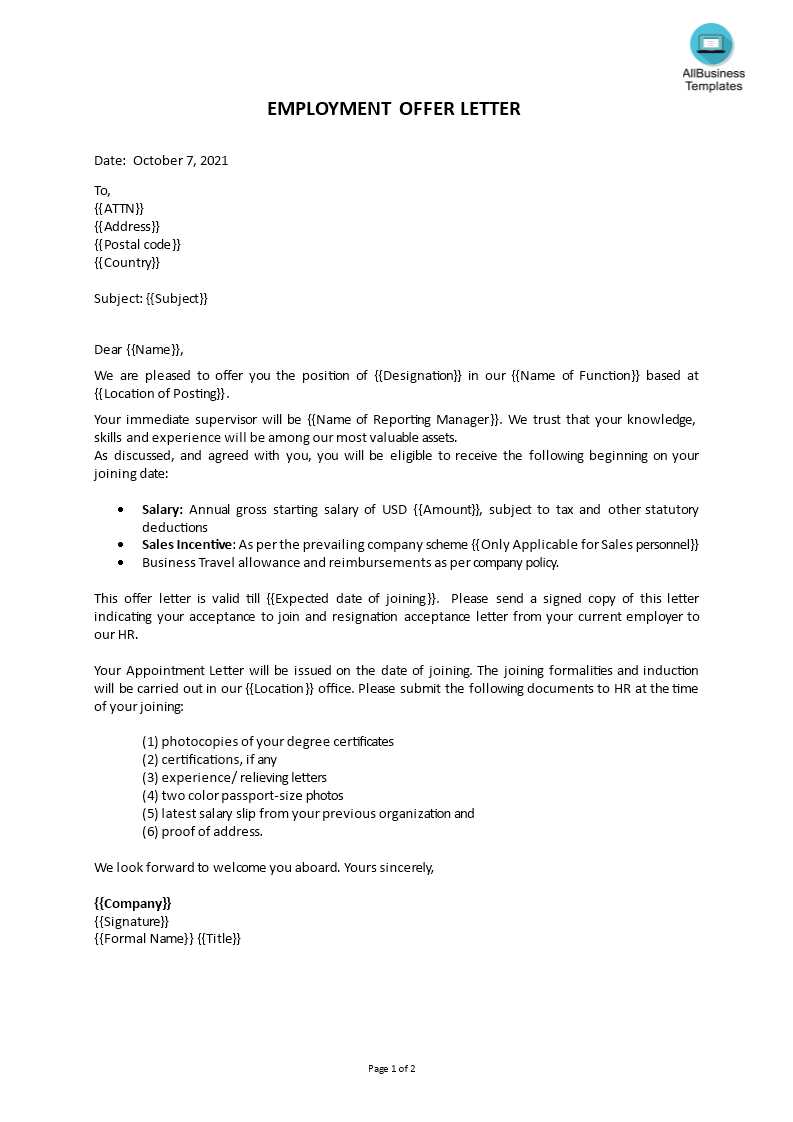
Customizing the communication that extends an employment opportunity is a key step in making the process more engaging and relevant to the candidate. By tailoring the document to reflect specific details about the position and the individual, you can make the offer feel more personal and thoughtful. This approach can create a stronger connection and show the candidate that the offer is uniquely designed for them.
The first step in personalization is addressing the recipient directly and using their full name at the beginning. This simple gesture can make a positive impression and set a welcoming tone. In addition, highlighting the individual’s skills or achievements during the selection process can help reinforce their value and show that their unique qualities were recognized throughout the evaluation process.
Another way to personalize the communication is by adjusting the terms to fit the candidate’s specific situation. For example, if the individual has special requirements or preferences, such as flexible hours or remote work options, these can be incorporated into the document. This flexibility not only aligns with the candidate’s needs but also enhances the overall appeal of the position.
Frequent Errors in Employment Proposals
When creating a formal document to extend an employment opportunity, there are common pitfalls that many employers fall into. These errors can lead to confusion, miscommunication, or even legal complications. By being aware of these mistakes, you can ensure that the document is clear, professional, and effective in setting the right expectations for both parties.
Key Mistakes to Avoid
- Leaving out essential details such as compensation, benefits, or start dates.
- Using vague language that can lead to misunderstandings about the role or terms.
- Failure to clearly state contingencies or conditions attached to the employment.
- Not personalizing the document to the individual, making it feel generic.
- Inconsistent formatting, which can make the document appear unprofessional.
Legal Considerations
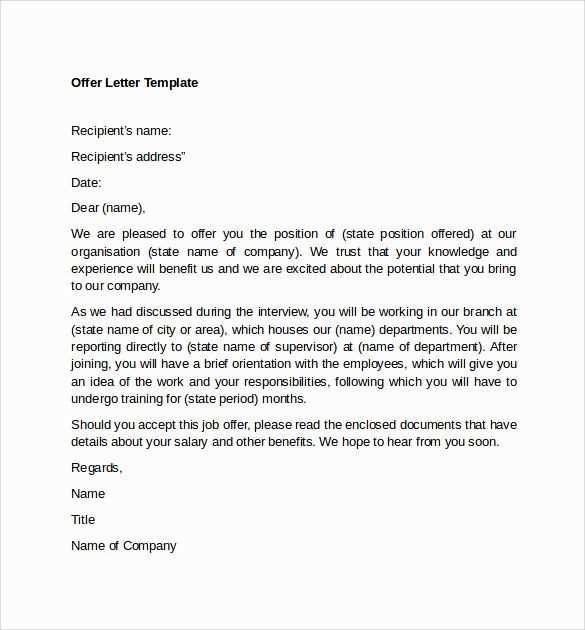
- Omitting necessary clauses related to confidentiality, non-compete, or intellectual property rights.
- Failing to comply with labor laws regarding compensation or employee rights.
- Not specifying at-will employment status, if applicable, leading to potential disputes.
Advantages of Using a Standardized Document
Using a pre-designed structure for extending employment terms offers a variety of benefits, ensuring consistency and clarity throughout the hiring process. A standardized approach allows employers to save time, reduce errors, and ensure that no important detail is overlooked. It also helps maintain professionalism while offering flexibility in customization to meet specific needs.
Time Efficiency and Consistency
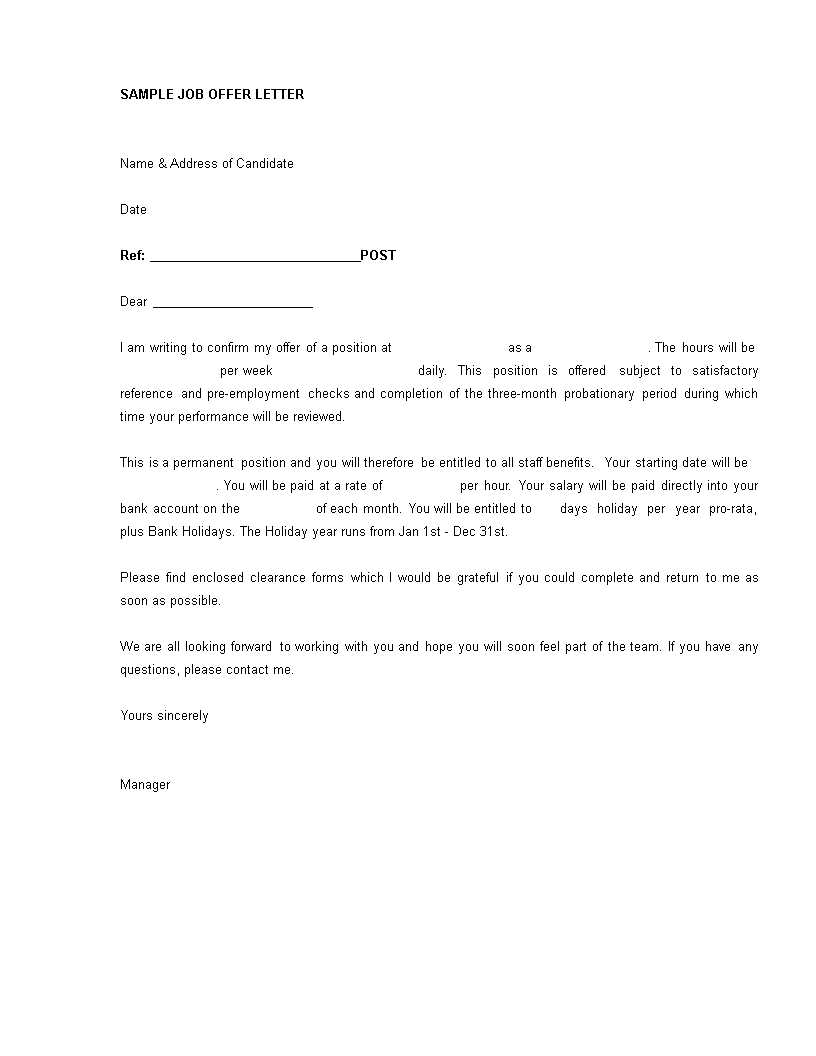
One of the biggest advantages of using a pre-structured format is the time saved. By having a ready-to-use structure, the process of drafting an employment agreement becomes faster and more streamlined. This also ensures consistency, as every document follows the same format and covers all necessary aspects.
Reducing Errors and Oversights
Pre-designed documents act as a checklist, minimizing the risk of leaving out important details, such as salary, job duties, or benefits. This can help prevent misunderstandings and ensure that all necessary information is provided clearly and accurately.
| Advantage | Description |
|---|---|
| Time-saving | Reduces time spent drafting from scratch. |
| Consistency | Ensures all terms are presented in a uniform manner. |
| Customization | Allows easy adaptation to specific roles or needs. |
| Professionalism | Maintains a high level of clarity and formality. |
Legal Aspects of Employment Proposals
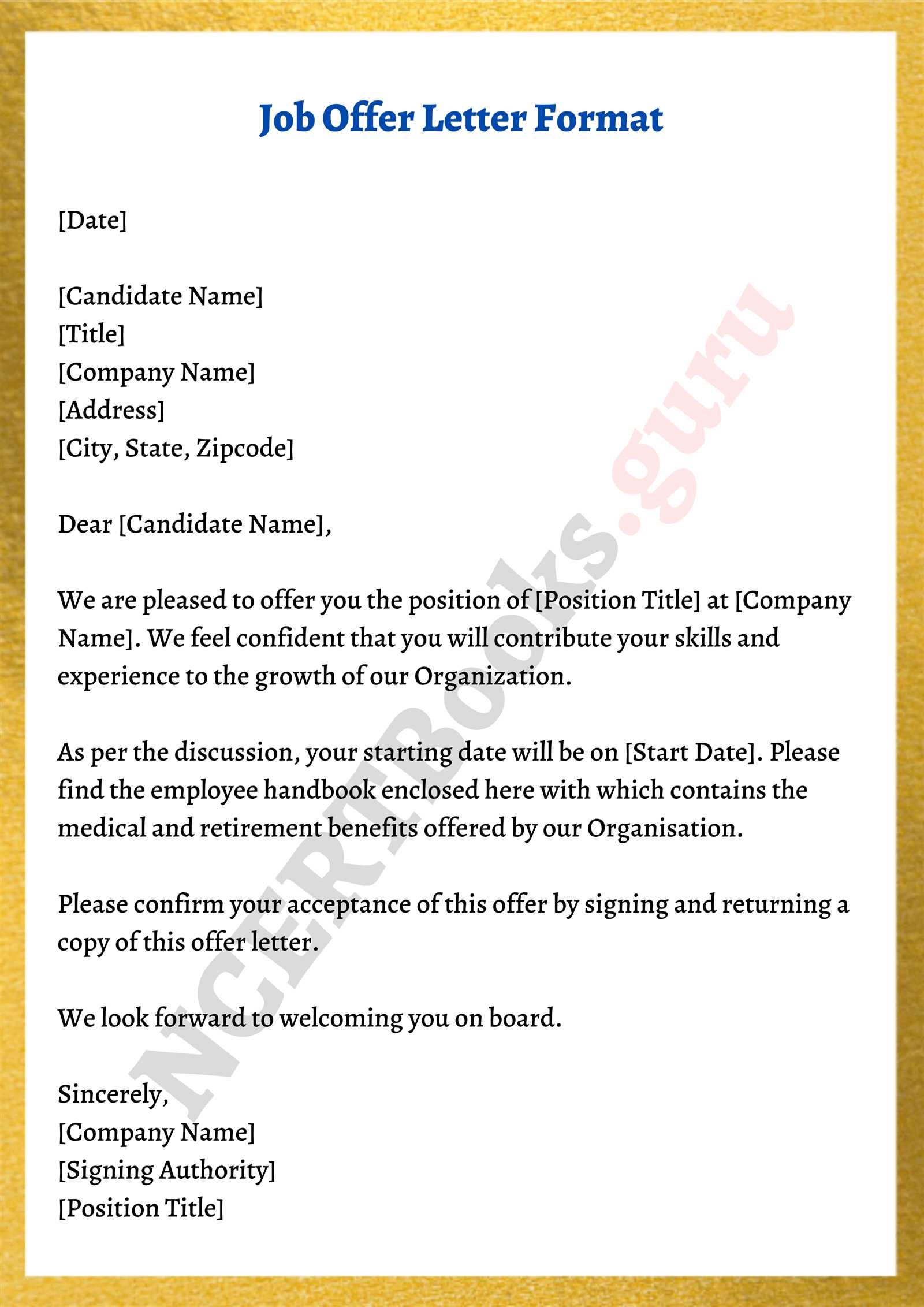
When creating a formal document to extend an employment opportunity, it’s essential to include certain legal provisions to protect both the employer and the candidate. These clauses ensure clarity and provide a framework for resolving any potential disputes that may arise. Including the right legal language helps avoid complications and makes sure that all terms are compliant with relevant laws.
Key Legal Considerations
- Non-Disclosure Agreement: Protects confidential company information and prevents the new employee from sharing sensitive data.
- Non-Compete Clause: Restricts the individual from joining a competitor for a certain period after leaving the company.
- Intellectual Property Rights: Defines ownership of any work or inventions created during the term of employment.
- At-Will Employment: Clarifies that the employment relationship can be ended by either party at any time, for any lawful reason.
- Compensation and Benefits: Outlines salary, bonuses, and benefits to avoid future misunderstandings.
Ensuring Compliance with Labor Laws
It’s also critical to ensure that the document complies with all relevant labor laws. This includes fair compensation practices, equal opportunity employment statements, and abiding by local, state, and national regulations. Failing to do so could result in legal penalties or challenges down the line.
How to Make Your Proposal Stand Out
In a competitive hiring market, it’s essential to craft a document that not only conveys the essential terms of employment but also leaves a lasting impression on the candidate. Personalization and clarity can set your offer apart from others and demonstrate your commitment to making the individual feel valued. By focusing on specific details that highlight the unique aspects of the role and the company, you can make the proposal more compelling.
Personalization and Tailored Benefits
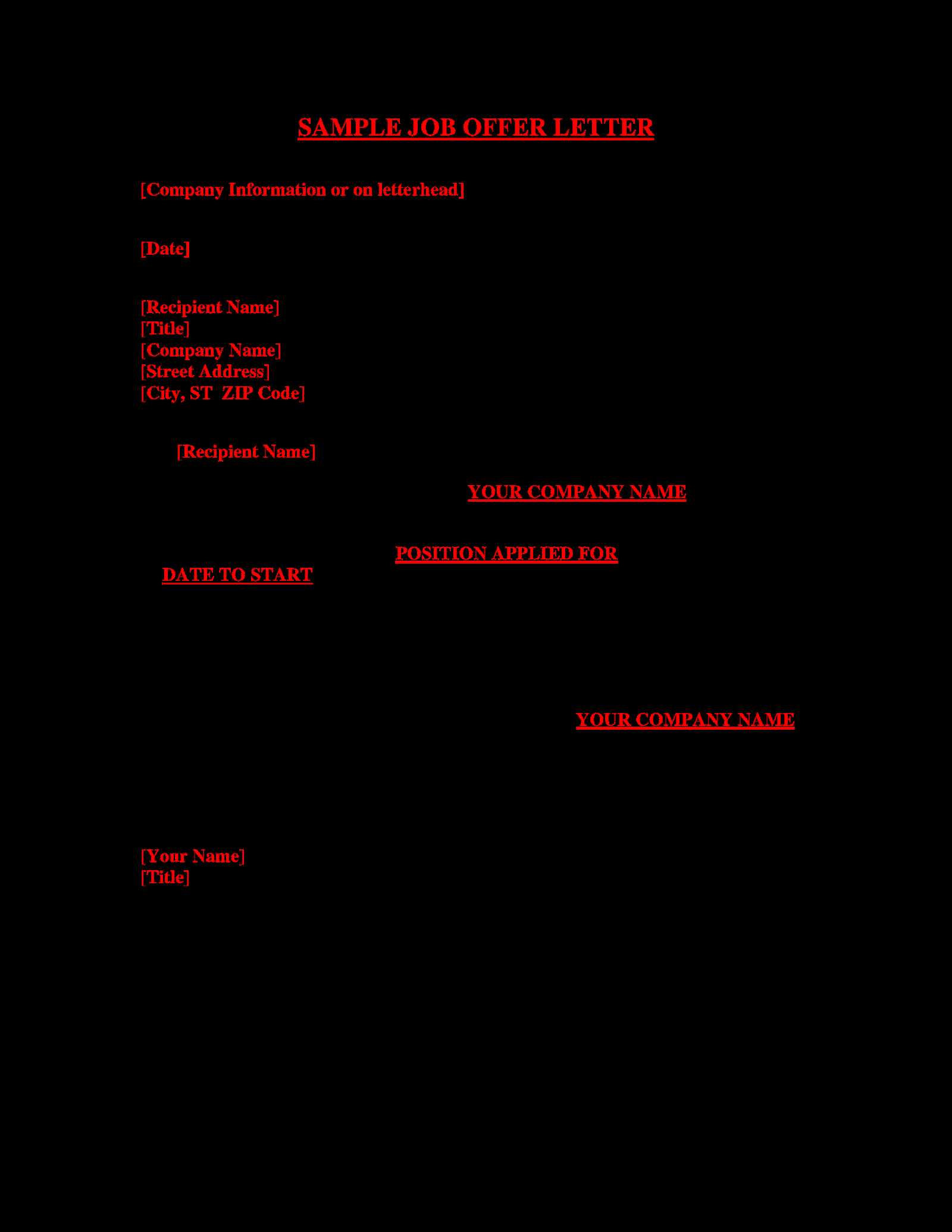
Instead of using a generic approach, personalize the content to address the candidate directly. Highlight how their skills align with the position and what unique contributions they will bring to the organization. Additionally, consider offering tailored benefits that go beyond the standard packages, such as flexible working hours, remote work options, or professional development opportunities.
Clear Communication and Engagement
Ensure the tone of your document is engaging yet professional. Make the language simple and clear, emphasizing the opportunities for growth within the organization. The proposal should reflect the company’s culture and the value placed on its employees, making the candidate feel excited about the role and eager to accept.